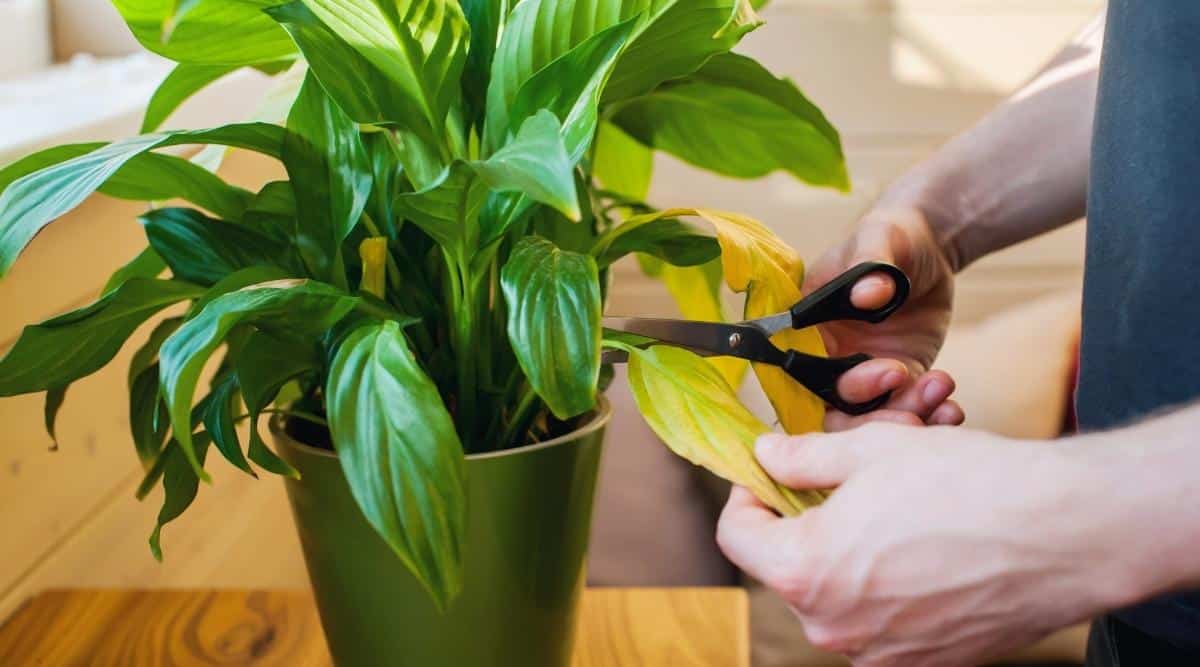Your cart is currently empty!

Causes of Peace Lily Tips Turning Yellow and Brown

If you’re growing peace lilies and notice your plants’ leaves turning yellow and brown, there are a few common causes. Thankfully, you can easily remedy the problem!
The easiest thing to do is move your peace lily away from direct sunlight. Ideally, you should place them a few feet back from an unobstructed southern or western window.
1. Too Much or Too Little Light
Peace lilies are native to tropical and subtropical climates, but they can grow well indoors, too. They like medium-to-indirect light and hate drafts and cold temperatures.
When the light is too bright, or the plant gets too little light, the leaves and stems can burn. This can cause the plant to stop photosynthesizing and eventually die.
Yellowing is also a common problem for these plants, so make sure you’re giving them enough light and keeping your growing area at a comfortable temperature.
If your peace lily is turning yellow and brown, it might have gone into transplant shock. This is uncommon, but it can happen if you transplant the plant too soon or if it gets stressed.
Overwatering is another issue that causes yellow and brown peace lily leaves. Check your watering schedule and try not to let the soil dry out more than the top inch or two. It’s easier to water this way if you’re using a drip irrigation system. You’ll also want to dump out the catchment saucer after you water, so it doesn’t hold in any excess water.
2. Too Much or Too Little Moisture
Peace lilies love warm temperatures, high humidity, and good air circulation. However, dry conditions can also be bad for them.
When the air is too dry, the leaf tips may wilt and turn yellow. You can remedy this problem by watering your peace lily regularly.
This can be done using a pot that has drainage holes in it so that the soil will not sit in water and pull away from the sides of the container. You should always use a watering solution that is bottled, as tap water can leave behind minerals that will hurt your peace lily.
You should also avoid overwatering your peace lily. This can cause the leaf edges to turn yellow and eventually brown.
Another common issue is a lack of nutrients. These plants require certain vitamins and minerals, including nitrogen, iron, zinc, and magnesium.
3. Too Much or Too Little Fertilizer
Peace lilies are sensitive to too much fertilizer, especially if you have used too much or the wrong type of fertilizer. Overfeeding can cause the leaf tips to turn brown and also lead to root burn.
Another common cause of yellowing is water quality. If the water contains high amounts of minerals, like hard water or tap water with low quality, these can build up in the soil and cause the leaves to yellow.
The solution is to regularly flush the soil with distilled water.
Repotting is a necessary part of peace lily plant care, but it’s important not to overwater them or use a pot that’s too big for them. This can rot the roots and cause your peace lily to grow weakly or die.
4. Too Much or Too Little Sun
The sun is the primary source of Vitamin D, which is essential for our overall health. However, the amount of sunlight we receive is often variable and may not be enough for all people.
When you notice that the leaves on your peace lily have turned yellow or brown, it can be an indication of too much or too little sun. If you’re not sure whether the plant is getting too much or too little sunlight, place a thermometer next to the plant and see how the temperature changes in response to the sun’s heat.
Overwatering – this is a big problem for many houseplants, including peace lilies. Watering too frequently can cause root rot and even death for the plant.
Overwatering can also be caused by a poor water quality, like tap water that contains salts and chemicals. To protect your peace lily from these problems, use rainwater or filtered water when possible. If you don’t have rainwater available, flush your soil with distilled water regularly to avoid mineral build-up.
by
Tags: